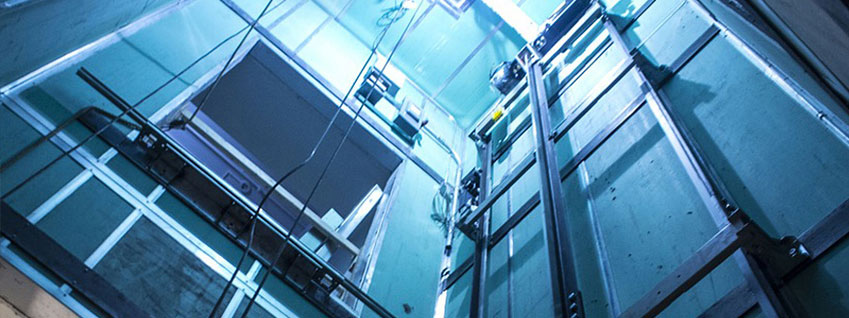We Maintain Lifts to the Highest Specifications: Reliable Solution for All Lift Types
Delving Into the Globe of Lifts: Common Issues Faced by Various Lift Devices
As we browse through the upright transport systems of modern structures, elevators stand out as a crucial component of our every day lives. Nonetheless, behind their smooth operation exists a globe of complex systems that can sometimes run into difficulties. From hydraulic lifts to traction systems and machine-room-less layouts, each lift kind features its set of usual problems. Recognizing these difficulties is crucial for making certain the smooth functioning of these vital systems. Allow's discover the complexities that underlie the procedure of elevators and the prospective issues that can develop, clarifying the elaborate internet of lift mechanisms.
Hydraulic Lifts
Hydraulic lifts, often preferred for low-rise structures, use fluid pressure to regulate the activity of the lift vehicle (lift repair companies). This device entails a hydraulic pump pushing oil right into a cyndrical tube, causing the elevator to move in the wanted instructions. While hydraulic elevators are known for their smooth and silent operation, they do come with their own set of typical concerns
One prevalent issue with hydraulic lifts is oil leak. The seals in the hydraulic system can put on out over time, resulting in oil seepage. This not only produces a mess yet can also affect the elevator's performance if left unaddressed. In addition, concerns with the control system, such as faulty shutoffs or a malfunctioning pump, can create disturbances in the lift's activity.
Normal upkeep and timely repair work are important to make sure the smooth functioning of hydraulic lifts. By resolving these usual problems proactively, building proprietors can decrease downtime and make sure the security and effectiveness of their upright transportation system.
Traction Lifts
When thinking about vertical transport systems in structures, one more typical type apart from hydraulic lifts is the traction lift. Grip elevators run utilizing a system of ropes and counterweights that move the lift automobile by gripping onto the hoist ropes. This system permits smoother and much faster vertical transport contrasted to hydraulic systems.
One of the common concerns dealt with by traction lifts is rope wear. The continuous motion of the ropes within the traction system can bring about tear and wear with time, potentially creating the elevator to breakdown or come to be dangerous for use. Normal evaluations and upkeep of the ropes are important to ensure the lift's proper performance and security.
An additional problem that grip elevators might encounter is connected to the control system. Troubles with the control system can result in concerns such as erratic activity, hold-ups in reaction times, or also complete shutdowns. Normal testing and upkeep of the control system are essential to protect against such issues and make certain the elevator's dependability.
Machine-Room-Less (MRL) Lifts

One of the key parts of MRL elevators is the compact gearless grip machine that is installed within the london lift company hoistway. This maker effectively drives the elevator car without the demand for bulky tools discovered in typical grip elevators. In addition, MRL elevators generally make use of a counterweight system to stabilize the cars and truck, further enhancing their power effectiveness.
Despite their benefits, MRL lifts may deal with difficulties connected to repair and maintenance because of the constrained room for equipment setup. Access for servicing components within the shaft can be limited, requiring specialized training for service technicians. Proper maintenance routines and routine examinations are essential to make sure the ongoing smooth procedure of MRL we maintain lifts lifts.
Overloading and Weight Limit Issues
Are elevators furnished to take care of excess weight lots efficiently and safely? Overwhelming and weight limitation problems are essential issues in lift procedures. Lift manufacturers layout lifts with particular weight capabilities to guarantee guest safety and security and tools long life. Going beyond these weight restrictions can lead to various troubles, consisting of mechanical failings, delays, and safety risks.
When elevators are strained, it puts excessive pressure on the electric motor, cords, and other components, possibly triggering malfunctions or failures. If they detect excess weight, safety and security systems such as sensors and overload sensing units are in location to prevent lifts from moving. In addition, going beyond weight limitations can result in raised energy consumption and damage on the elevator system.
To minimize overwhelming issues, developing managers need to prominently present weight limitations in lifts and inform occupants on the value of adhering to these limitations - lift repair companies. Regular upkeep checks by qualified professionals can also aid guarantee that lifts are operating within risk-free weight criteria. By dealing with overloading and weight limitation problems proactively, building owners can boost elevator security and performance
Electrical System Failures
Exceeding weight limits in elevators can not only lead to mechanical concerns yet also potentially contribute to electrical system failures within the lift infrastructure. Electrical system failings are a critical worry in elevator operation, as they can trigger unforeseen shutdowns, breakdowns, or even security dangers.
Regular upkeep and assessments are essential to recognize and deal with possible electrical concerns immediately, ensuring the risk-free and efficient procedure of elevator systems. By sticking to weight limits and performing routine electric system checks, structure owners can minimize the risk of electric failures in elevators.
Verdict

Hydraulic lifts, commonly preferred for low-rise structures, use fluid pressure to regulate the motion of the lift auto.When taking into consideration vertical transport systems in buildings, one more typical kind apart from hydraulic lifts is the traction lift. Grip elevators run making use of a system of ropes and counterweights that relocate the elevator automobile by gripping onto the hoist ropes. Unlike traditional lifts that need a separate equipment room to house the tools, MRL lifts integrate most of the elements within the shaft, getting rid of the requirement for a committed device space.In final thought, lifts encounter common problems such as hydraulic breakdowns, grip system failures, and electric system problems.